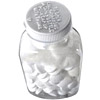Opioids now most prescribed class of medications
Two reports by addiction researchers at the University of Pennsylvania School of Medicine and the National Institute on Drug Abuse show a drastic shift in prescribing patterns impacting the magnitude of opioid substance abuse in America. The reports, published in JAMA, recommend a comprehensive effort to reduce public health risks while improving patient care, including better training for prescribers, pain management treatment assessment, personal responsibility and public education.
The JAMA Research Report shows that there has been a drastic increase in opioid prescriptions while prescriptions for non-steroidal anti-inflammatory drugs (NSAIDs) have gone down. Prescriptions for hydrocodone and oxycodone account for 84.9 per cent of opioid prescriptions. Over ten years, there has been a five-fold increase in admissions to substance abuse programs for opioid addiction.
While effective at reducing pain symptoms, opioid medications such as hydrocodone and oxycodone are associated with high rates of abuse, particularly among young adults. One in four 18–25 year olds will abuse prescription painkillers in their lifetime.
Researchers suggest targeting the relatively high rate of prescriptions to adolescents and young adults, who received 11.7 per cent of the 202 million opioid prescriptions in the United States during 2009. A large share of the prescriptions to young adults was from dentists, and researchers believe there is a need for medical professionals to evaluate alternative pain medications in this particularly vulnerable age group.
“The scope of the problem is vast – opioid overdose is now the second leading cause of accidental death in the United States and the prevalence is second only to marijuana,” said Thomas McLellan, PhD, co-author of the studies and director of the new Center for Substance Abuse Solutions, housed in the Department of Psychiatry at the University of Pennsylvania School of Medicine. “This study provides valuable information about factors contributing to the high rates of opioid analgesics, and identifies areas ripe for intervention.”
In the accompanying Commentary, researchers offer recommendations to improve current pain management in primary care while simultaneously decreasing diversion, abuse and overdoses of opioid medication. These recommendations include:
- Comprehensive and contemporary training for pain management care providers –including physicians, nurses, dentists and pharmacists – covering the latest research advances on pain and addiction and new drug treatment options.
- Supporting the American Pain Society guidelines, which include plans to develop and roll out screening procedures for those at risk for abuse and dependence (e.g. adolescent or young adults, individual or family history of substance abuse history.)
- Increasing public awareness and responsibility of the addiction risks, to curb sharing or theft of the medication within families.
The research was conducted by The National Institute on Drug Abuse, of the National Institutes of Health, while Dr McLellan was serving as Deputy Director of the United States Office of National Drug Control Policy.
Penn Medicine researchers are already looking into possible solutions to address these issues. Dr McLellan leads the new Center for Substance Abuse Solutions that will translate addiction research into evidence-based practical applications to be used locally, nationally and globally.
Collaborators from the Penn Pain Medicine Center will partner with Penn’s Center for Substance Abuse Solutions and Department of Internal Medicine to develop a “Patient-Centered Medical Home” care model for patients with chronic pain problems. This new process integrates care provided by primary care physicians and specialists in an effort to provide high-quality, comprehensive care to patients. New healthcare information technology, such as electronic healthcare records and Internet-based collection of patient outcomes, will be used to improve coordination of care. Researchers hope that Patient-Centered Medical Home model will improve pain care and lower the chances of diversion and abuse of pain medications.
“The research published clearly demonstrates the risk of harm that pain medications can cause when used incorrectly,” said Michael Ashburn, MD, MPH, MBA, professor of Anesthesiology and Critical Care and director of Pain Medicine at the University of Pennsylvania School of Medicine. “We hope our efforts will demonstrate that improvements can be made to the patient care process and lead to improved pain control and a lower risk of abuse and diversion of these medications.”
(Source: University of Pennsylvania Medical School: JAMA)
More information
 | For more information on opioids, see Opioids for Analgesia. |
Dates
Tags
Created by:

 Login
Login














